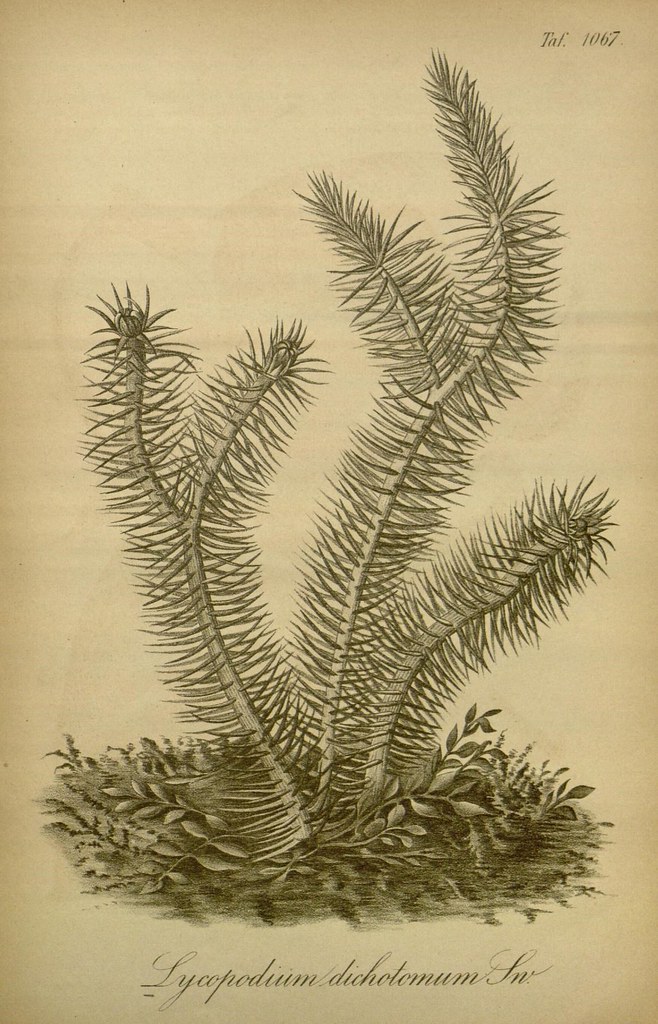#lycophyte
Text
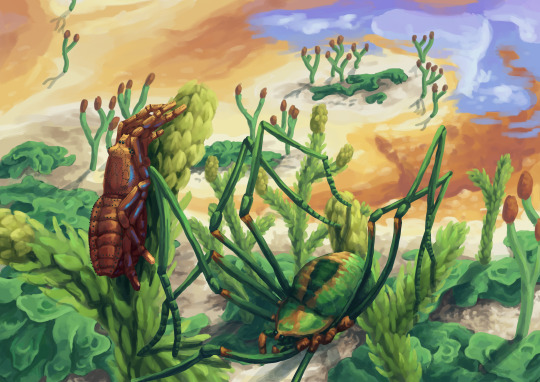
In the Devonian, a Palaeocharinus tuberculatus trigonotarbid hides behind a lycophyte stem as a potentially hungry Eophalangium sheari climbs over from a neighbouring plant.
#paleoart#palaeoart#arachnid#arthropod#trigonotarbid#devonian#rhynie chert#harvestman#geothermal#paleontology#palaeontology#lycophyte#liverwort
273 notes
·
View notes
Text

I didn't explain.
The lycophyte is very important role in history of planet Earth during Silurian period 🤢
#ognimdo2002#earth responsibly#science fantasy#devonian#Zosterophyllum#plant#Silurian#paleoart#paleoctober#paleontology#Vascular plant#Lycophyte#extinct#ibispaint art
26 notes
·
View notes
Text

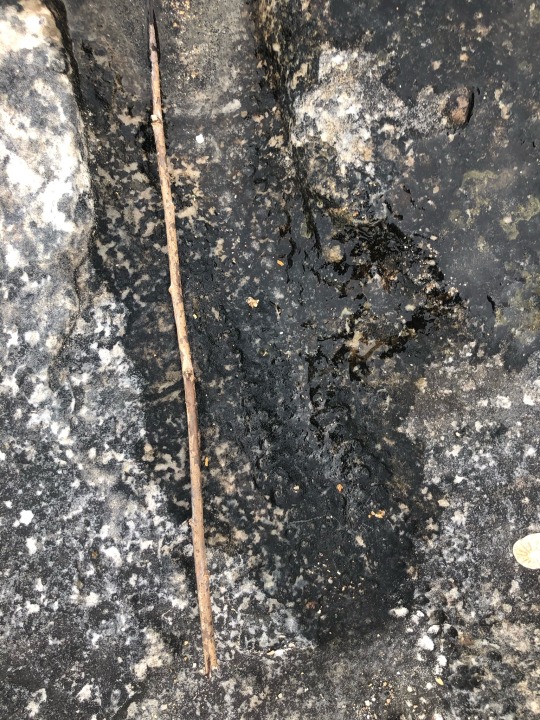
lepidodendron fossils (root impressions,, the holes are vertical roots and the long shallow textured trough is a horizontal root)
There are lots of lycopods nearby, many herbariums have lycopod samples that go back centuries, with DNA that can be used in next gen sequencing …
I like to think the lycopods and the fossils are sitting there together like when you go to a graveyard and wonder if anyone there is a distant distant ancestor of yours
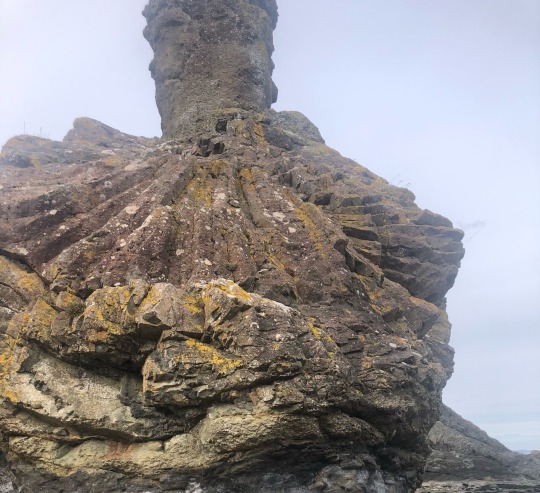
Basalt of an old volcano chamber and the conduit extending out of it. Similar to columnar basalt hexagon time but radial due to the round chamber !
Rough timeline:
Volcano is probably Devonian, most igneous rock here is,
Equatorial swamp in Carboniferous -> lepidodendron and extensive coal veins. Cool sedimentary rock too, with visible effects of tidal deposition,
From then on drift to higher latitudes. And other new places.
#miaow#palaeo#paleontology#palaeontology#Carboniferous#lepidodendron#lycopod#lycophyte#lycopodiopsida#Devonian#volcano#geology
92 notes
·
View notes
Video
n486_w1150 by Biodiversity Heritage Library
Via Flickr:
Gartenflora Erlangen :F. Enke,1852-1940. biodiversitylibrary.org/page/42115051
#Botany#Gardening#Germany#Periodicals#Plants#Ornamental#Missouri Botanical Garden#Peter H. Raven Library#bhl:page=42115051#dc:identifier=https://biodiversitylibrary.org/page/42115051#flickr#Lycopodium dichotomum#Phlegmariurus dichotomus#Phlegmariurus#huperzia#Lycophyte#botanical illustration#scientific illustration
3 notes
·
View notes
Text
This is for science; I want to know how many people know what moss is!
Please reblog when you vote and indicate your reasoning in the tags or comments! I'm trying to see what a good avenue for outreach would be.
#moss#bryophytes#botany#plants#lichens#fern allies#lycophytes#peat moss#sphagnum#listen I love moss and I love science communication and I'm sad that an awesome bryologist died recently#so I've decided to make an infographic about moss#but I need to know what is good and useful to put on it#rip Nancy Guttmann Slack#coolest old lady of all time#mine
53 notes
·
View notes
Text
The burning Gondwana! | Gondwana em chamas!
🇬🇧
Finally, my favorite time interval! My studies in paleobotany focus on the Upper Paleozoic, and today I bring to you this paleoenvironment that illustrates what the Permian-Carboniferous was like in Gondwana. Drawing fire is always a challenge, but I really enjoyed the outcome. I sped up the time-lapse because the video ended up being really long. Each tiny leaf was drawn individually, which made the video a bit less dynamic in the end, but it was a very cool creative process.
I dedicate today's post to Dr. André Jasper. Jasper is one of the earliest Brazilian paleobotanists to dedicate his life to studying paleovegetational fires in the Upper Paleozoic of Gondwana. He is one of the leading global experts in the study of charcoal and fire dynamics in the Paleozoic and Mesozoic eras.
Let’s get started! 🔥
The Permian-Carboniferous, also known as the Late Permian, is a division of the Permian geological period that occurred approximately between 298.9 million and 251.902 million years ago. During this period, Earth was united into a single supercontinent called Pangaea, which consisted of two main landmasses: Laurasia in the north, and Gondwana in the south.
The flora of the Permian-Carboniferous was dominated by a wide variety of plants, including ferns, lycophytes, horsetails, and the first gymnosperms (seed-bearing plants). These plants formed dense forests in many parts of the world, especially in tropical and subtropical regions.
Paleovegetational fires in Gondwana refer to forest fires that occurred during the Permian in the forests of the supercontinent Gondwana. These fires are identified through geological evidence, such as coal layers, which are formed from carbonized plant material. These fire events were influenced by a combination of environmental factors, including dry climate conditions, the presence of combustible biomass, and volcanic activity.
Paleovegetational fires in Gondwana played a significant role in the evolution of plants and forest ecology during the Permian. Forest fires may have promoted the adaptation of some plant species to fire conditions, leading to the development of features such as fire-resistant bark and the ability to regenerate after fires.
At this point in geological time, the planet is transitioning from a climatic cycle of Ice-house (cooling, with presence of ice at the poles) to a Green-house (warming, absence of ice at the poles). This ultimately leads to the demise of peat bog systems in many regions of Gondwana, causing many plant species to no longer occur during the Permian.
🇧🇷
Finalmente meu intervalo de tempo favorito! Meus estudos na paleobotânica se concentram no Paleozóico superior, e hoje trago para vocês esse paleoambiente que ilustra o que foi o Permo-Carbonífero no Gondwana. Desenhar fogo é sempre um desafio mas, gostei muito do resultado. Acelerei o time-lapse porque o vídeo ficou realmente longo. Cada pequena folha foi desenhada individualmente, o que deixou o vídeo pouco dinâmico no fim mas, foi um processo criativo muito legal.
Dedico a postagem de hoje ao Dr. André Jasper. Jasper é um dos primeiros paleobotânicos brasileiros a dedicar sua vida estudando os paleoincêndios vegetacionais no Paleozóico Superior do Gondwana. É uma das grandes referências mundiais em estudo de charcoal e dinâmica do fogo no Paleozóico e no Mesozoico.
Vamos começar! 🔥
O Permo-Carbonífero, também conhecido como Permiano Superior, é uma divisão do período geológico Permiano, que ocorreu aproximadamente entre 298,9 milhões e 251,902 milhões de anos atrás. Durante este período, a Terra estava unida em um único supercontinente chamado Pangeia, que consistia em duas massas de terra principais: Laurásia, no norte, e Gondwana, no sul.
A flora do Permo-Carbonífero era dominada por uma grande diversidade de plantas, incluindo samambaias, licopódios, esfenófitas e as primeiras gimnospermas (plantas com sementes nuas). Essas plantas formavam densas florestas em muitas partes do mundo, especialmente nas regiões tropicais e subtropicais.
Os paleoincêndios vegetacionais do Gondwana referem-se aos incêndios florestais que ocorreram durante o Permiano nas florestas do supercontinente Gondwana. Estes incêndios são identificados através da evidência geológica, como camadas de carvão, que são formadas a partir de material vegetal carbonizado. Esses eventos de incêndio eram influenciados por uma combinação de fatores ambientais, incluindo condições climáticas secas, presença de biomassa combustível e atividade vulcânica.
Os paleoincêndios vegetacionais do Gondwana tiveram um papel significativo na evolução das plantas e na ecologia das florestas durante o Permiano. Incêndios florestais podem ter promovido a adaptação de algumas espécies de plantas a condições de fogo, levando ao desenvolvimento de características como cascas resistentes ao fogo e capacidade de rebrota após incêndios.
Neste momento do tempo geológico, o planeta está saindo de um ciclo climático de Ice-house (resfriamento, com presença de gelo nos polos) para um Green-house (aquecimento, ausência de gelo nos polos). Isso acaba resultando no fim dos sistemas de turfeira presentes em muitas regiões do Gondwana, levando muitas espécies vegetais a não mais ocorrerem durante o Permiano.
#science#paleontology#geology#universe#earth#paleobotany#biology#digital painting#space#artwork#arte digital#artists on tumblr#original art#art process#my art#digital art#art#paleozóico#paleomedia#paleobotânica#paleoarte#paleozoic#paleontologia#paleoart#paleostream
8 notes
·
View notes
Text
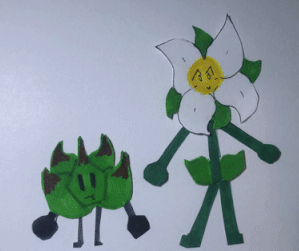
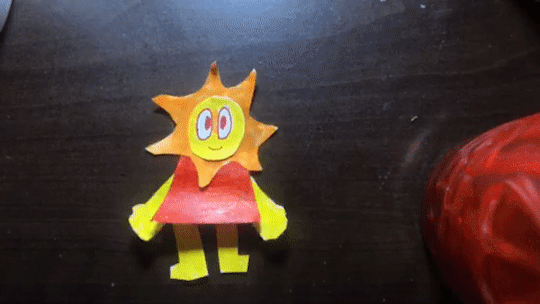
Stop motion attacks for Art Fight! (lycophyte & heartcoric)!
btw i’m ~denpamen on AF. Wink wink
#cheys art#stop motion#stop motion animation#art fight#art fight 2023#animation#crafts#paper dolls#animated#animated gif#object shows#inanimate insanity#object oc
29 notes
·
View notes
Text
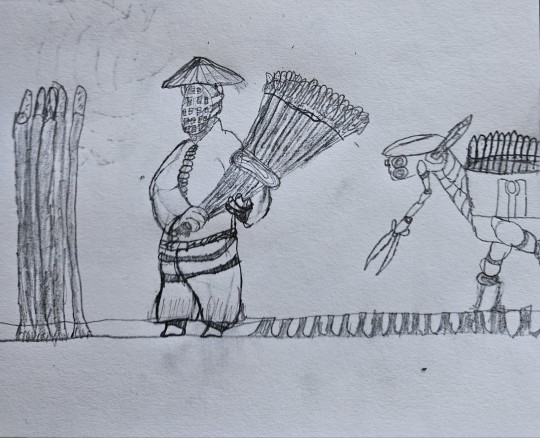
Dressed in traditional garb intended to keep biting insects and aquatic animals off the farmer, an Earth Caste gathers Vitamin Rich Lycophyte-analogous flora, his trusty Khachchar unit behind him.
Just a fun little doodle!
5 notes
·
View notes
Note
i read your pinned post please tell me about the pteridophytes :)
OKAY
hm so pteridophytes are a type of vascular plant (it has a vascular system, transporting glucose and water around the plant), and they reproduce using spores WHICH IS COOL IMO!
ferns, lycophytes (clubmosses) and horsetails (mostly grouped in with ferns) are all pteridophytes! (i will put in pictures lol) idk why i find it so cool that ferns use spores to reproduce but i REALLY DO!
because they don't reproduce using flowers or seeds like a lot of plants, they sometimes get referred to as cryptogams (meaning their means of reproduction is hidden). the group pteridophyte is a bit questionable though because ferns and horsetails are more closely related to seed plants than they are to lycophytes, but they still somehow fall into the same group which i find cute :]
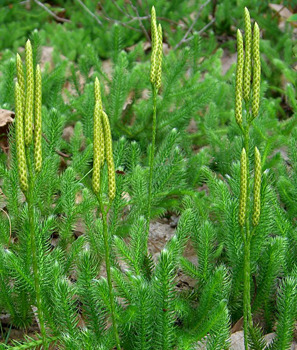


top left is a lycophyte, top right is a horsetail and bottom is a hard fern (a blechnum)
okay uh i hope this is what you asked for lol you seem really cool
anyway have a nice day
:]
wait hm how should i tag this
14 notes
·
View notes
Text
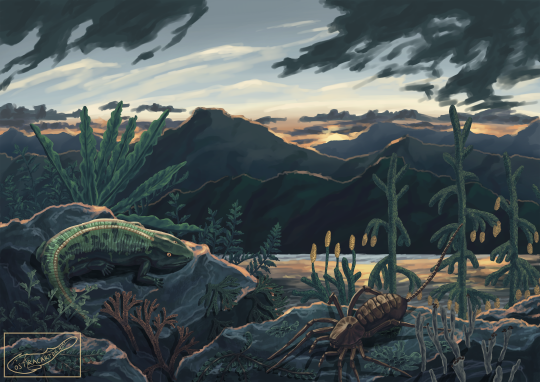
Permian sunset with Peltobatrachus and an early arachnid
#paleoart#peltobatrachus#amphibian#diapsid#tetrapod#arachnid#palaeoart#landscape#landscape art#plants#lycophytes#temnospondyl
327 notes
·
View notes
Photo
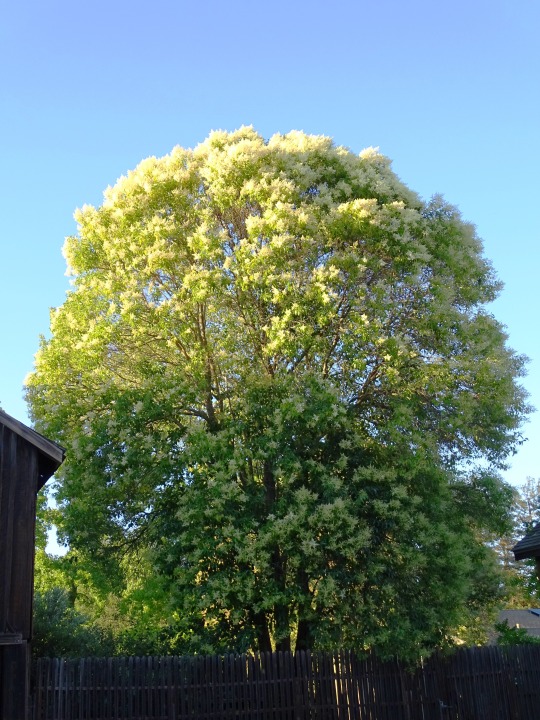

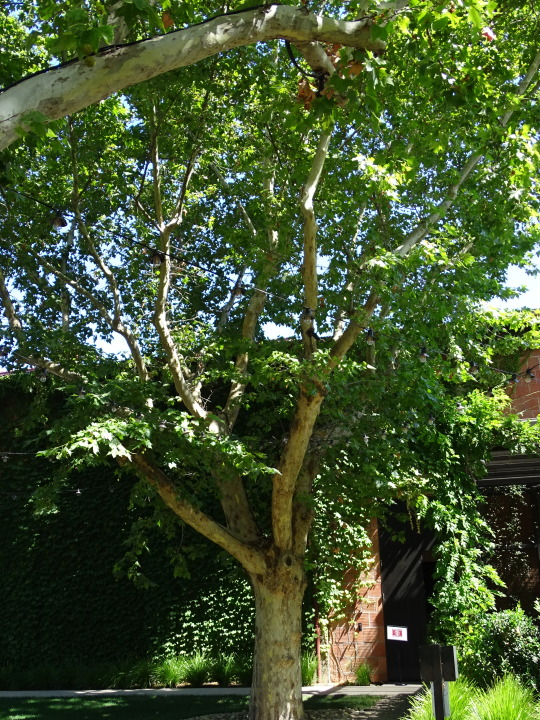


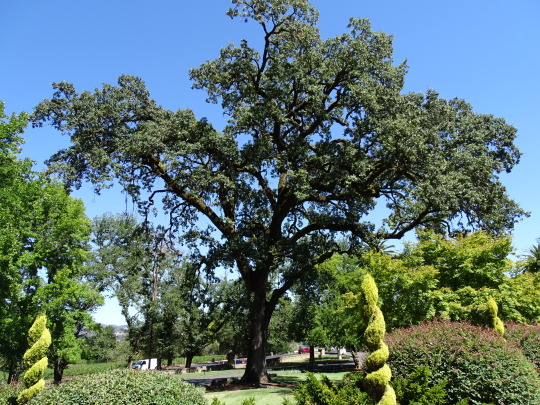
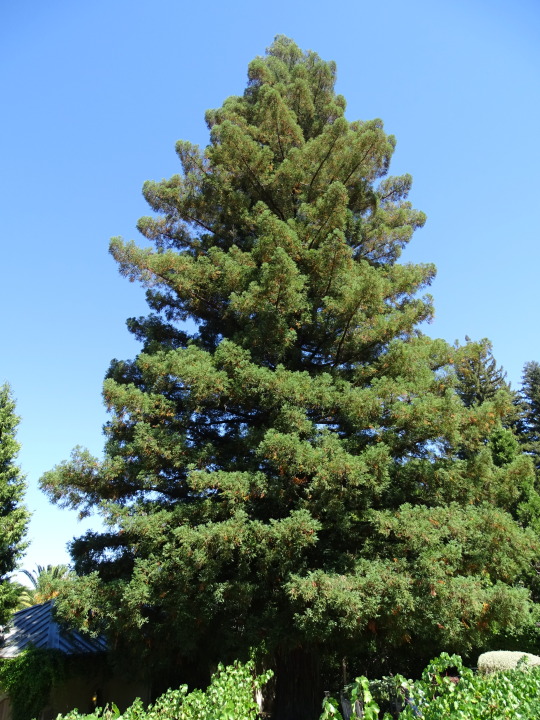
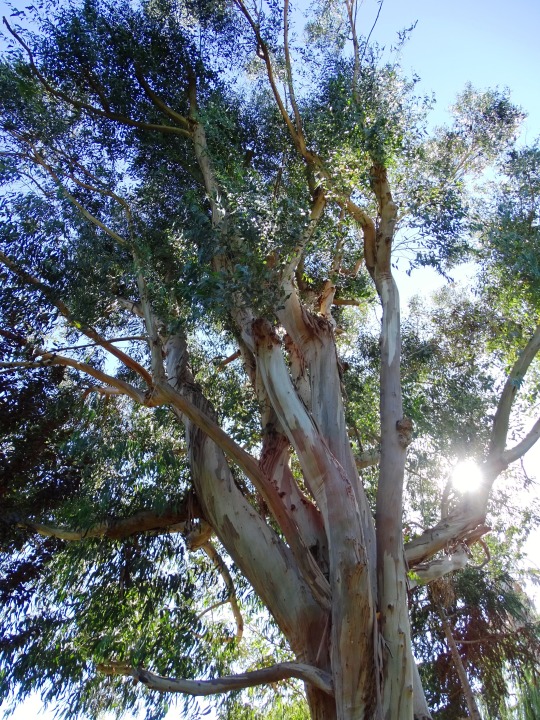
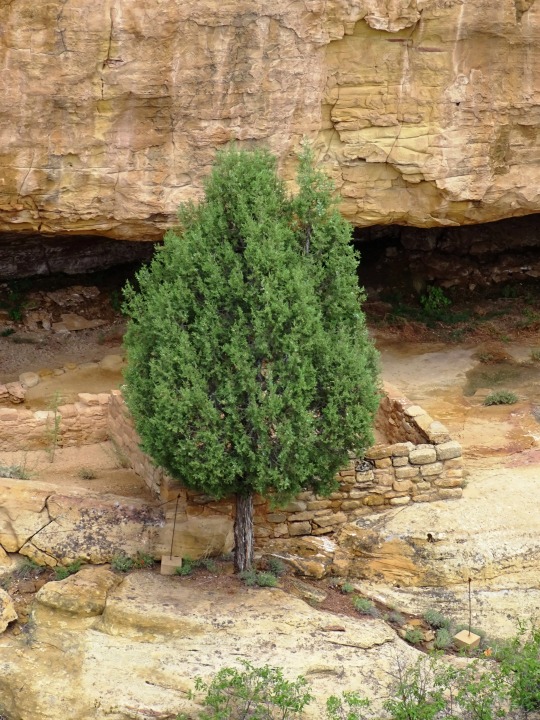

National Love a Tree Day
National Love A Tree Day is celebrated every year on May 16 and it falls right in the middle of Garden for Wildlife Month. Did you know trees actually didn’t exist for the first 90% of Earth’s history? Shocking, isn’t it? Before trees, our Earth had fungi that grew 26 feet tall and resembled trees. Trees have played an irreplaceable role in the smooth functioning of our environment and celebrating this special day dedicated to them is the least we can do to appreciate them.
History of National Love a Tree Day
Trees can be thousands and thousands of years old with many species tending to have long lifespans. In fact, trees can be traced back to the creation of the world, according to the Bible and the story of Adam and Eve who ate the fruit of the Tree of the Knowledge of Good and Evil.
From well-preserved cellular anatomy, it has been found that Cladoxylopsida were the first species of large trees to appear on Earth almost 400 million years ago in the Devonian period. The other earliest trees were known to be tree ferns, horsetails, and lycophytes and, currently, it is estimated that there are close to three trillion mature trees in the world.
Trees have so many benefits — they provide us with lumber, food, nuts, oxygen to breathe, home for wildlife, and much more. Trees are even used for ornamental and decoration purposes. In the United States itself, there are approximately 766 million acres of forest land.
Trees form an essential part of our environment and, over the years, their importance has been taught to children growing up. Even in recent times, individuals have become so environmentally conscious that a sustainable lifestyle to protect our trees has become the norm. Most people now want to protect and preserve our trees, which make the world a better and safer place to live in.
While the hunt to find the origins of this day is still on, an entire day of appreciation for trees that have given us so much is the least we can do.
National Love a Tree Day timeline
1800 Christmas Tree Tradition
European nobles and officials adopt and popularize the tradition of setting up evergreen conifer trees in homes for Christmas.
1830 –1860 Joshua Tree’s Name
These plants get their name from Mormon settlers as the shape of the tree’s branches reminds them of a biblical passage wherein Joshua raises his hands to the sky in prayer.
1994 Wollemia Trees Found
A few survivors of these ancient trees that were once thought to be extinct are found living in a temperate rainforest in Australia.
2007 First Tree Fossil
Fossils of probably the first tree, Wattieza, that date back to the middle Devonian period, are found in New York State.
National Love a Tree Day FAQs
What day is Tree Day?
Arbor Day occurs on the last Friday in April.
What is World Tree Day?
World Tree or Forest Day is celebrated annually on 21 March.
How are trees important?
They give us clean water to drink, air to breathe, shade, and food for humans, animals, and plants. They provide habitats for numerous species of fauna and flora, firewood for cooking and heat, materials for buildings and places of spiritual, cultural, and recreational importance.
How To Celebrate National Love a Tree Day
Hug a tree
Plant a tree native to your area
Go for a walk in the woods
Release your inner tree hugger and go hug some trees to show them your love. Make sure you do it in front of some people so you can inspire them to show their love to these gentle giants too!
Do some quick research on trees that are native to your area. Once done, you can go ahead and purchase some seeds for that tree and plant them. Put in an effort to look after it as much as possible and see the fruits of your labor grow, literally.
Trees are a vital part of nature and exist all around us. Why not spend the day among trees to celebrate? Go for a walk in the woods and soak in the beauty of trees.
5 Facts About Trees That Will Blow Your Mind
The oldest tree
Space travel
They save you money
Trees can communicate
Trees are very thirsty
A bristlecone pine tree named Methuselah has lived for more than 4,800 years and is older than the Egyptian Pyramids.
Trees have kind of traveled to space when tree seeds were taken up by Apollo 14 astronauts.
Having a mature tree’s shade near your house can actually help to reduce your home cooling bill by approximately 20% in the summer.
It has been found that trees start producing a chemical called phenolics when they detect an insect raid, which acts as a signal for other trees.
An average tree can drink up to almost 530 gallons of water annually.
Why We Love National Love A Tree Day
Trees keep our streets and homes cooler
It helps to reconnect with Earth
Trees are a habitat for wildlife
Urban areas can get significantly hot and even more so in summer. This is when our loving trees come to the rescue! The shade and water vapor provided by trees can keep urban areas so much cooler. National Love A Tree Day is a perfect opportunity to acknowledge the importance of this green cover.
Planting a tree or simply taking care of existing trees can evoke a sense of belonging with nature. Trees are nature, after all, and spending time with them can help you reconnect with Earth. National Love a Tree Day can be a good place to start if you’ve been feeling a disconnect with nature and life outside of routine work.
Of course, we know that a lot of animals live in the forests and need trees for survival. Trees are home to a diverse range of birds, insects, and mammals. A simple tree will also house hundreds or thousands of small creatures like snakes, frogs, millipedes, ants, termites, spiders, to name a few. National Love a Tree Day helps us appreciate these beauties that are essentially home to so many living beings.
Source
#Japanese Pagoda Tree#Louis M. Martini Winery#Freemark Abbey Winery#Napa Valley#Beringer Vineyards#Eucalyptus dalrympleana#Cline Family Cellars#Grand Mesa National Forest#Yosemite National Park#Mesa Verde National Park#California live oak#California#Colorado#USA#summer 2022#original photography#landscape#tourist attraction#vacation#countryside#National Love a Tree Day#NationalLoveaTreeDay#16 May#flora#nature
3 notes
·
View notes
Text
In Pics: 290-million-year-old ‘rare’ forest unearthed in Brazil
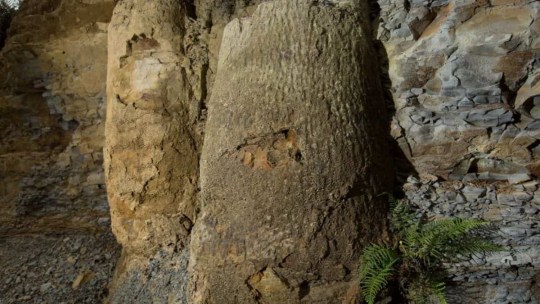
A fossilised upright forest, which seems to have been 290 million years old, has been found in southern Brazil by a team of researchers. It is being considered as a “window to the past” and can help in the study of plant’s evolution.
The trees in this forest have been preserved in vertical position, which is rare. The experts have discovered a set of 164 trunks of lycophytes (without fruits, flowers or seeds) of an extinct variety of tree.
It is “the most important discovery in the southern hemisphere”, due to the quantity and quality of the preservation, said Thammy Mottin, geologist and PhD, Federal University of Paraná. He led the research alongwith collaborators from the University of California and the Federal University of Rio Grande do Sul.
“With an estimated age of 290 million years, these plants represent very primitive forms in the history of the Earth,” added Mottin. He has been studying the post-glacial period, where the climate was warmer and more conducive for the emergence of dense forests like the one found.
Continue reading and see more pictures.
@mindblowingscience
#brazil#science#biology#ecology#environmentalism#brazilian politics#defend brazilian science#mod nise da silveira#image description in alt
23 notes
·
View notes
Text
They're called lycophytes because everyone likes them
#clubmoss selaginella tassel ferns quillwort the best plants to exist <3#I'm learning how to propagate plants from spores just to get clubmoss because I actually can't find it for sale anywhere. and it's#moderately common in some parks and you can collect the spores so...#(turning up to history class on wednesday with a bunch of ferns and my friend was like why do you have ferns. and I was like well I had a#free period before lunch so I went to the hardware store to get peat for growing clubmoss so I can give my room a devonian ambience and she#was like of course you go to the hardware store at lunch and get ferns.)
8 notes
·
View notes
Text
Polystichum imbricans, Narrowleaf Sword Fern
Polystichum imbricans, Narrowleaf Sword Fern
perennial fern
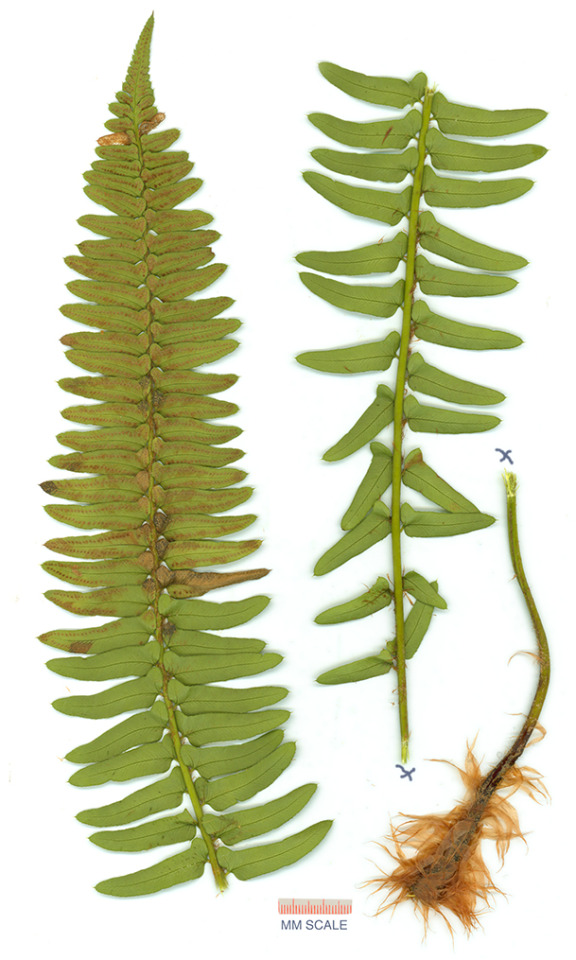

KEY
terrestrial plant with no flowers or bulbs sporangia present
Herbs reproducing by spores released directly from sporangia, the sporangia variously located [on abaxial leaf face, [LYCOPHYTES and FERNS]
Plant terrestrial l; leaf 1-2 pinnate,; sporangia borne on aerial portion of leaf
Leaves all alike or nearly so, the fertile [sporangium-bearing] blades very similar in size and shape to sterile blades sporangia borne on underside of leaf blade, new leaves generally coiled, unrolling as they develop
Sori borne away from margin on underside of leaf or leaflet, sporangia clustered in distinct sori; indusia present
Sori ± round
Blade without needle-like hairs
Indusium peltate or round-reniform, attached ± in center of sorus , generally present and readily observable in late-season specimens ..... DRYOPTERIDACEAE
- Indusium peltate , centrally attached, without a sinus
- Veins generally free, rarely ± joined; leaf 1–3-pinnate, teeth, generally including bristle-like tips, < 4 mm ..... POLYSTICHUM
-Leaf generally 1-pinnate, rarely to partly 2-pinnate; pinnae generally simple, ± entire to serrate, in Polystichum kruckebergii sometimes 1-lobe
Leaf 10–120(200) cm; pinnae simple
Proximal pinnae ovate to lanceolate , ± = to ± 2/3 longest; stipe generally 1/5–1/2 blade
Stipe base scales lanceolate, ± 2–3 mm wide, those above proximal pinnae generally < 1 mm wide, falling early; pinnae ± in 1 plane or not; indusium ± entire to toothed ..... P. imbricans
DESCRIPTION
Rhizome: generally suberect to erect, often stout
Stipe/petiole: generally 1/5--1/2 of blade Stout, firm, generally densely scaly, base scales +- 2--3 mm wide, lanceolate, those above proximal pinnae generally, ×-section with many round vascular strands in an arc.
Blade: narrow-lanceolate to -elliptic, 1-pinnate,, proximal pinnae reduced or not, thin to leathery, scaly, veins generally free, rarely +- jointed; pinna bases often wider acroscopically; teeth, generally including bristle-like tip
Sporangia: sori round; indusium peltate [0 or reniform], sinus 0. indusium +- entire to toothed
SOURCES AND MORE INFORMATION
https://www.itis.gov/servlet/SingleRpt/SingleRpt?search_topic=TSN&search_value=17681#null
https://plants.usda.gov/core/profile?symbol=POIM
https://ucjeps.berkeley.edu/eflora/eflora_display.php?tid=10784
https://www.inaturalist.org/taxa/58763-Polystichum-imbricans
https://calphotos.berkeley.edu
https://www.instagram.com/p/CeFidZIrKxT/
https://wildflowersearch.org/search
Jepson Herbarium Youtube Polystichum Munitum
#Polystichum imbricans#Narrowleaf Sword Fern#polystichum#shield ferns#dryopteridaceae#wood fern#polypodiales#filicopsida#tracheophyta#pteridophyta#cliff sword fern#california native plants#california native#ca native#fern#botany#pinna looks a sword with a hilt
3 notes
·
View notes
Text
Greenhouse gases
When solar radiation reaches the earth, the surface of the planet absorbs two-thirds of the energy. The remaining portion is redirected into the atmosphere, where greenhouse gases are present. The planet remains habitable due to the process of these gases reflecting energy to Earth, where it is once again converted to heat. We refer to this phenomenon as the greenhouse effect.
Greenhouse gases occur naturally in the atmosphere. They allow solar radiation to reach the earth while absorbing the thermal energy radiated by its surface, keeping it warm. Without these gases, the Earth would be as cold as Mars. Conversely, with an extremely high concentration, the Earth would become too hot, much like Venus.
In the earth's atmosphere, water vapor (H2O), carbon dioxide (CO2), methane (CH4), nitrous oxide (N2O), and ozone (O3) are the principal greenhouse gases. All these gases, excluding water vapor, have increased in concentration due to human activities.
Carbon dioxide (CO2) - One of the main greenhouse gases created by human activity and a factor in climate change is carbon dioxide. Increased carbon dioxide levels are caused by burning fossil fuels, plowing, thawing permafrost (permanently frozen soil), and the breakdown of organic materials. During the Paleozoic Era, massive amounts of carbonaceous matter—coal and oil—were buried deep beneath the ground. Much of the CO2 in the atmosphere was taken up by horsetail, lycophyte plants, and marine plankton, which used it for growth and multiplication. These plants' remnants eventually accumulated at the bottom of wetlands and seas, where they were converted into coal and oil in the lack of oxygen. We are releasing this CO2 back into the atmosphere by mining and burning this coal and oil. It's interesting to note that during the Proterozoic era, the temperature was similar to what it is today despite the atmosphere having three times the amount of CO2 that it does now. This was due to the sun's radiation being around one-third weaker.
Methane - Methane is thirty times more effective than CO2 as a greenhouse gas at reflecting sunlight. It is produced via the fermentation of methane in an oxygen-free atmosphere. Methane is released in large quantities during the extraction and transportation of oil and gas, as well as during the raising of cattle, the disposal of waste, and the growing of rice. It also forms in the ocean, at the bottom of dams, and in the estuaries of the world's rivers that contain fertilizer-enriched water. Huge oxygen-free zones have formed as a result of the oxygen being depleted by these circumstances. These "dead zones" now encompass regions the size of whole continents.
Nitrogen oxides - Nitrogen oxides are greenhouse gases that are 300 times more powerful than CO2. The primary causes of emissions of nitrous oxide include the combustion of fossil fuels in transportation and manufacturing, industrial agriculture, and the manufacturing of certain chemicals, such as fertilizers. Thus, transportation and modern agriculture—particularly chemical fertilizers—make up the majority of the contributors. Nitrous oxide harms the Ozone layer in addition to its effects as a greenhouse gas.
0 notes
Text
Prehistoric Nature Resource Pack Update: Lycophyte Trees
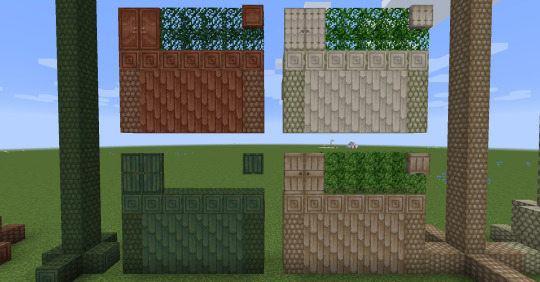
Original textures below:

Lycophytes are an ancient group of plants which first arose as far back as the Silurian and survive today as small species known as clubmosses and quillworts. However, during the Carboniferous, the Lycophytes reached great sizes, taking forms we now call the “scale trees.” The Prehistoric Nature mod represents four of these in-game, these being the famous Lepidodendron, and the more obscure Bothrodendron, Diaphorodendron, and Sigillaria.
In updating these textures I had several goals in mind
Develop textures that fit with the 1.13+ Jappa default textures
Develop textures that are cohesive within a wood type (i.e. logs match planks and so on)
Develop textures that are cohesive between trees
Develop textures that accurately represent the trees depicted
The first thing I did was create a unique plank design to be shared between the lycophyte scale trees to differentiate them from other wood types. Finding that the design I created did not tile well when used on all sides of the block, I also created an alternate texture for the top of the plank blocks.
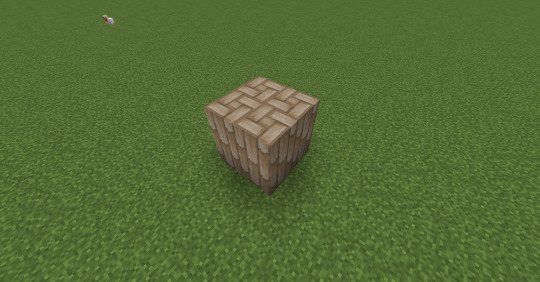
I then textured the logs, starting with bothrodendron, and then adjusted the texture for the other tree types. I wanted to clearly show the scales for which these trees are known for, as they are very distinct in the bark pattern. I also redid the top texture of the logs to match the color of the planks.

Next, I worked on redoing the doors and trapdoors. For some, I was able to edit them only a small amount to work with my art style, particularly Sigillaria and Diaphorodendron. Lepidodendron (the reddish wood) I had to edit heavily, but left the style largely intact. Bothrodendron (the tan wood) had to be completely redone to fit with the new planks. I also made new item textures for the doors. It's a really fun little thing to do, as figuring out how to stylize the doors into a smaller icon is a neat challenge.


There you have it! That’s all for now. Have one more look at everything together, and how it looks in the Carboniferous swamps!

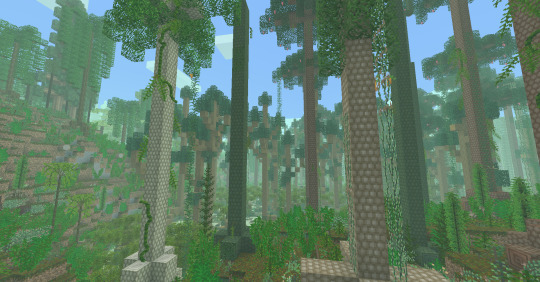
95 notes
·
View notes
